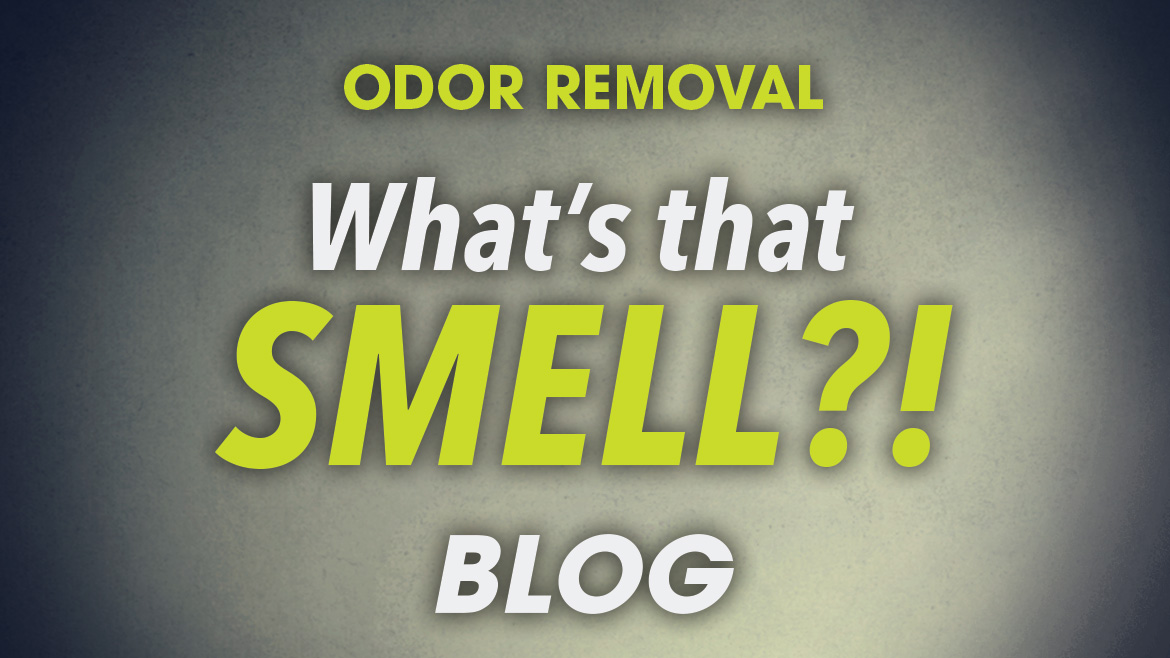Nuisance odors are a problem. After all, even the most attractive property can be marred by a foul smell that everyone notices. Bad odors can cause frustrations for employees, clients, tenants, and customers. In many situations, they can also be a sign of something that is unsafe.
Mold, mildew, biological matter, and chemicals that are off-gassing into the air aren’t just annoyances. They each carry their own health risks, including asthma, allergies, headaches, dizziness, nausea, and much more.
This is where restoration companies can help, without needing to demo walls or even remove contents. The first step in fighting odors: determine the cause by finding the source.
Nuisance odors are always caused by something in the environment. That is good news because it means that if you can identify and remove the source, you are already going to be on your way to getting rid of the problem.
Here are some common sources of workplace odors and how to remove them.
Water Damage, Mold, and Mildew
Water damage doesn’t just have one source, but it often leaves behind one major problem: mold. Whether the water damage was from rising floodwaters, leaky plumbing, appliance failure, roof leaks, or some other disaster, mold can grow just about anywhere.
To address mold growth, you need to find all of the sources of mold, including what could be in the carpets, flooring, walls, drywall, furniture, or ceiling. Proper mold remediation methods are needed to ensure a safe environment for everyone living in or working in the space.
Sewage and Biological Matter
Some floods have a hazardous component as well — sewage.
Sewage that comes into a property through a plumbing back-up or major flood can create a horrible odor. The odor, though, is just a sign of a dangerous problem because exposure to sewage is a major health risk. Again, proper restoration protocols need to be in place to clean and disinfect affected areas while the odors are also being removed.
Fire & Smoke
Even small fires can cause major odor issues. Smoke fills the space and seeps into any porous material, including walls, floors, ceilings, and furniture. Experience restorers know how tricky fire damage restoration can be, and how odors have a tendency to try to hide in every nook, cranny, and porous material. Rather than using a sealer during the restoration process, though, consider using technology like a hydroxyl generator that has the ability to remove both obvious and hidden odors.
New Construction Smell
Employees occupying a new workspace or new homeowners often complain about strong chemical odors in the new space. This is the result of off-gassing of Volatile Organic Compounds (VOCs). This new construction smell is not just a figurative headache; it can cause literal headaches as well!
Some strategies for getting rid of new construction smell include airing out your workspace by opening windows and running fans, using air purifiers and hydroxyl generators, and turning up the heat for a few days to help speed up the process of breaking down VOCs.
Even after cleaning up the source, problem odors can sometimes linger in the air if you aren’t thorough and strategic with the process and tools you use.
Hydroxyl Generators
Hydroxyl generators truly eliminate odors, rather than just masking them. These machines break down organic materials in the air that leave behind odors. It’s the same process that happens because of the sun’s ultraviolet rays, so it is a natural solution to a frustrating problem.
For all of the odors we have discussed here, hydroxyl generators can be a key part of the solution to odor elimination!
